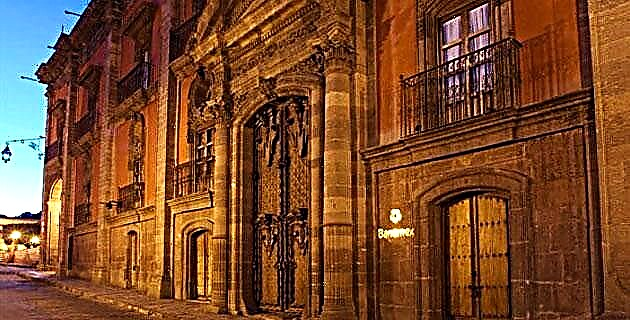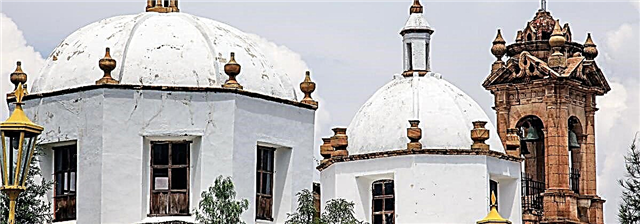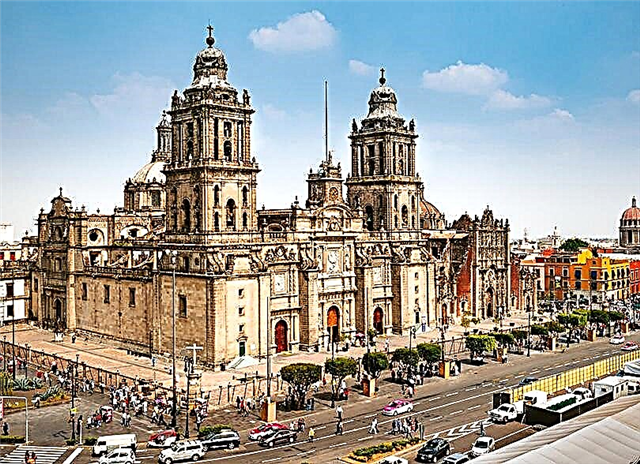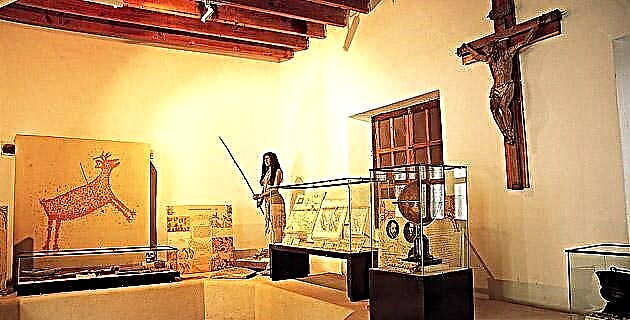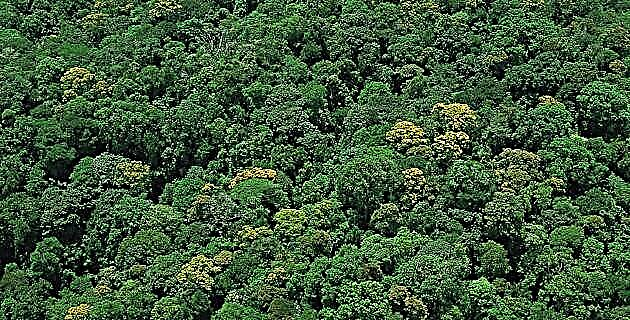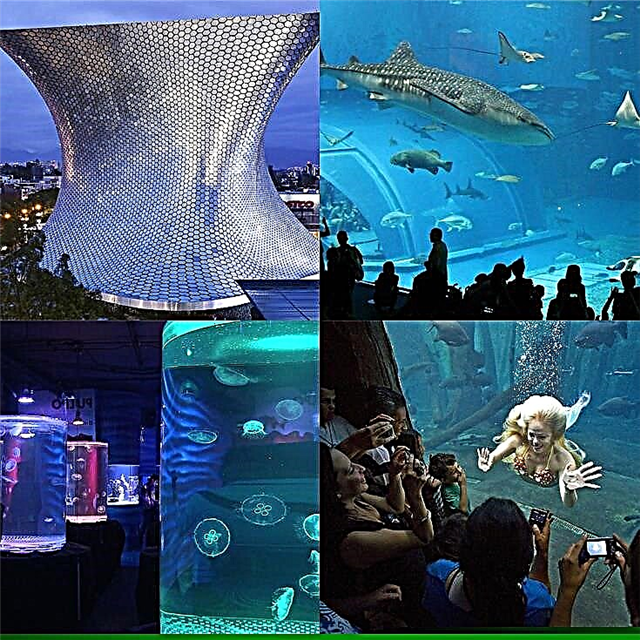In just 3 years, the Inbursa Aquarium has become a favorite attraction of Chilangos and Mexicans and foreigners who go to the City of Mexico. Here is everything you need to know about this place that is causing a real sensation among children and young people.
What is the Inbursa Aquarium?
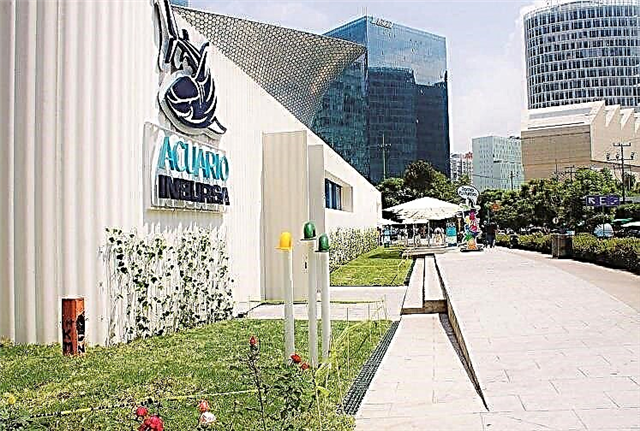
It is the largest aquarium in Latin America, also having the unusual peculiarity that it is underground. It is located in Colonia Ampliación Granada del Mexican DF and it opened its doors in 2014, after an investment of 250 million pesos by the Mexican magnate Carlos Slim.
It has 48 exhibits and 5 levels, 4 of them underground. The exhibition area is 3,500 square meters and can simultaneously serve 750 visitors.
How was the Inbursa Aquarium built?
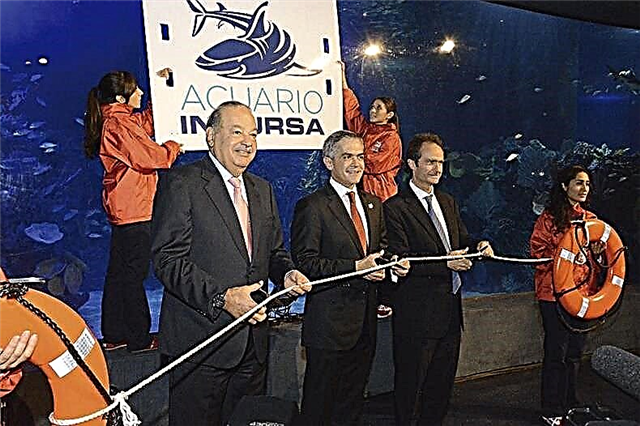
This environmental project was a challenge, due to its underground characteristics and the delicate variables of seismicity that must be taken into account in any major construction in Mexico City.
The aquarium design was carried out by the FR-EE firm, in a project led by the architect Alejandro Nasta. The interior design team was led by Gerardo Butrón, a passionate scuba diver who visited 18 aquariums around the world before taking on the complex challenge.
One of the main challenges was the management of seawater in underground containers, to provide species with habitats similar to those of free life, for which 22 million liters of salt water were brought from the coast of Veracruz.
Another difficulty was the pouring of concrete into an underground environment so that the structures of the huge tanks were without cracks. Likewise, the project did not have the flexibilities offered by the cranes operating in the open air for the assembly of the acrylic windows of the exhibits.
More than 100 professionals participated in the project, including technicians, engineers and architects in charge of construction and biologists and museographers specializing in marine and river fauna and flora.
How is the aquarium made?
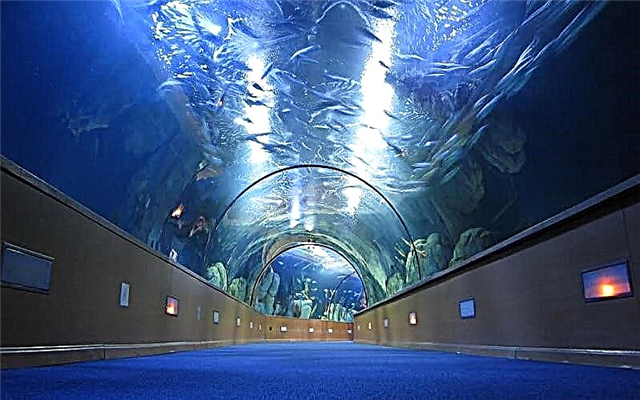
The Inbursa aquarium has 48 exhibits, with about 14,000 specimens of more than 350 species, among which there are sharks, crocodiles, rays, clown fish, piranhas, turtles, seahorses, penguins, jellyfish, corals, lobsters, octopuses, crabs and many others.
The aquarium sections are as follows:
- Seabed and Coral Reef: In this place set with a sunken ship, some 200 species coexist, among these, sharks and rays.
- Touch pool: This is home to jellyfish, clown fish, crabs, lobsters, and other species. In this section the public can interact with some specimens.
- The Beach: In this place a beach is recreated with several species of fish and includes a lighthouse. The "beach" even has a "combi" that sells coconut water, horchata and other drinks.
- Rainforest: This section is home to freshwater species such as piranhas and axolotls, as well as reptiles such as turtles and snakes.
- Outdoor pond: It is located in the food and souvenirs area.
What are the main exhibits?
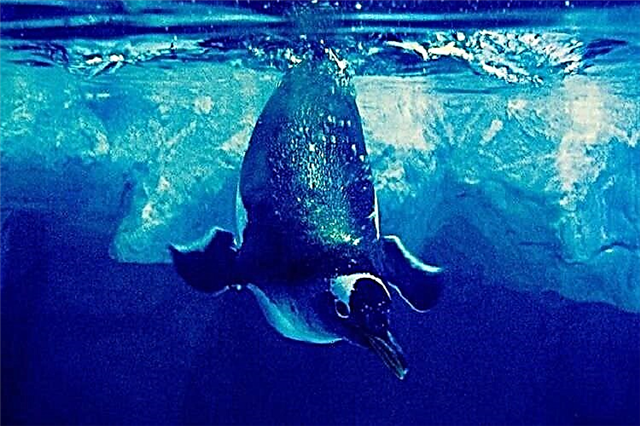
It would be long to list the almost 50 exhibits set in the Inbursa Aquarium. Public favorites include Penguinarium, Rays Lagoon, Kelp Forest, Black Mangrove, Coral Reef, Sunken Ship, Calypso Beach, Jellyfish Labyrinth and Seabed.
One of the most complex artificial habitats in the aquarium is the penguin. The penguin is a group of flightless seabirds that lives in Antarctica and other extreme environments in the southern hemisphere. Only one species lives above the equator, the Galapagos penguin.
What species are in the Laguna de Rayas?
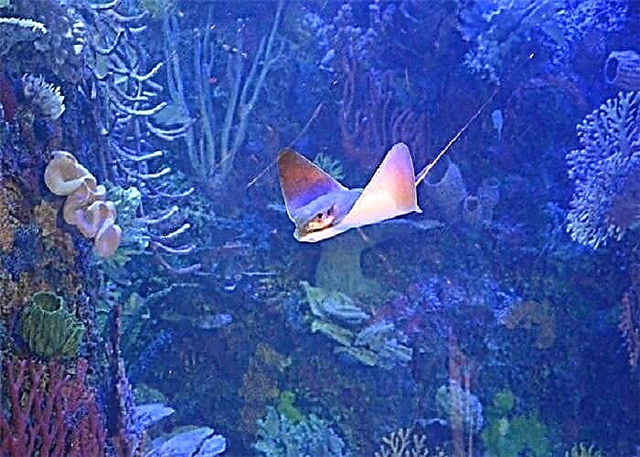
There are those who confuse stingrays with manta rays, but they are not the same species. A ray measures 2 meters and a fraction between the two extreme tips of the pectoral fins, while in a manta ray this length can reach up to 9 meters.
In the aquarium's Rayas Lagoon you will see, among others, the Tecolota Ray, also called Gavilán Ray, a species that has its natural habitat in the North Atlantic and the Caribbean Sea.
The Tecolota Ray reach 100 cm in length and a body weight of 20 kg. It is currently a threatened species.
What is a Kelp Forest?
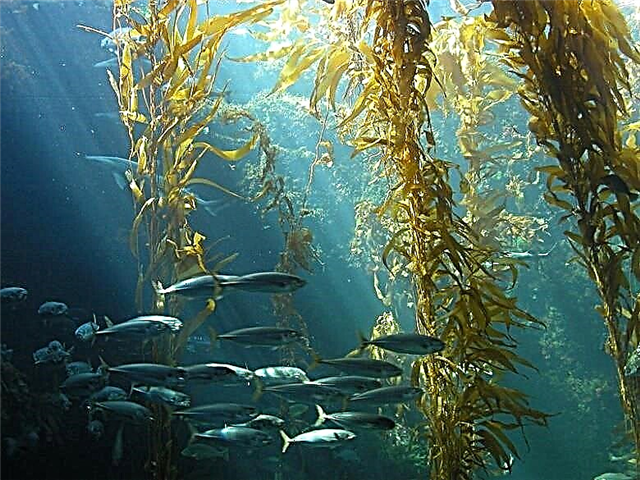
It is an underwater space with a high density of algae and is usually among the most dynamic ecosystems on the planet.
The main algae in these forests are the brown ones belonging to the Laminariales order, whose filaments can reach lengths of 50 meters.
In natural living conditions, a Kelp Forest offers a cozy three-dimensional habitat that is home to fish, shrimp, snails, and many other species.
One theory even postulates that the first colonization of America, during the last Ice Age, was made by fishing communities that followed the kelp forests across the Pacific Ocean.
In Mexico, the Kelp Forest of the San Benito Islands, Baja California, on the south side of the California Current, is one of the best preserved on Earth, with algae up to 100 feet.
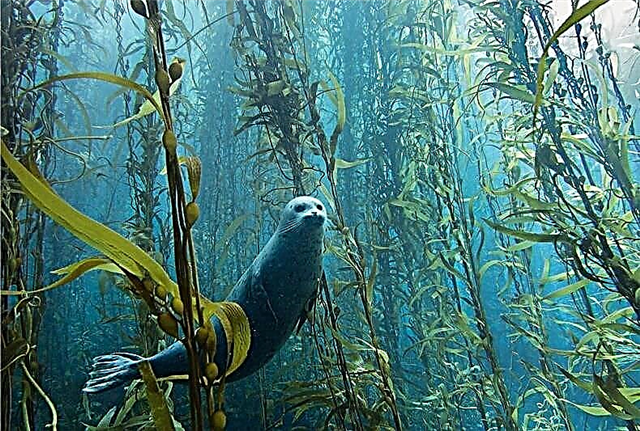
This Baja California ecosystem is very colorful, provided by species such as Garibaldi fish, Vieja fish and coral algae. Under the rocks that support the roots of the algae are groups of lobsters that move their antennae without stopping.
We hope that one day you will be able to dive through this spectacular Mexican underwater setting, but in the meantime, you can admire a Kelp Forest at the Inbursa Aquarium.
What is the Black Mangrove like?
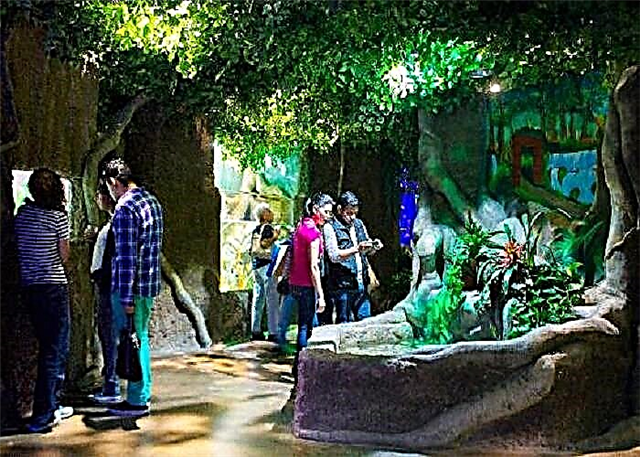
The black mangrove, also called prieto, is a species of marine flora that plays a key role in the maintenance of ecosystems, as it houses and protects species of fish, birds and crustaceans.
Likewise, the litter and debris from these mangroves are moved by the tides, contributing to the formation of plankton that is vital for sustaining marine life.
The tropical coastal areas of Mexico are rich in mangroves, where the trees can reach heights of the order of 15 meters.
The Black Mangrove of the Inbursa Aquarium gives you the opportunity to get to know these environments that are so important for natural life without leaving Mexico City.
What's in the Coral Reef?
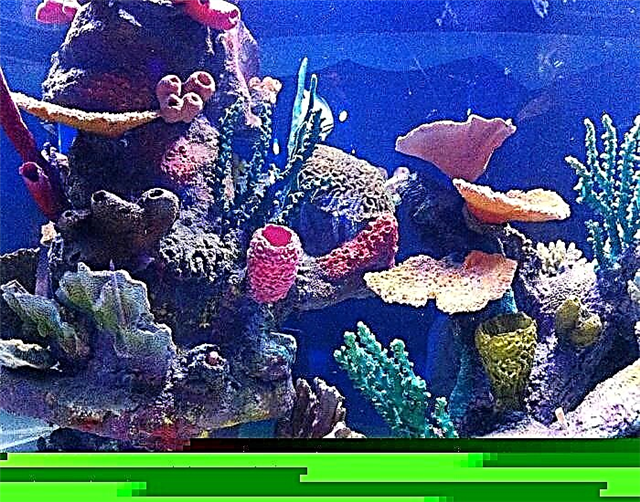
Coral Reefs form the marine communities most intensely rich in biodiversity, since occupying just less than 1% of the ocean floor, they are home to up to 25% of marine species.
The most important coral reef on the planet is the Great Barrier Reef, off the coast of Australia, with a length of 2,600 km and one of the few natural formations on Earth that can be seen from space.
The second most important coral structure in the world, with more than 1,000 km, is the Great Mayan Reef, on the Mesoamerican Caribbean coast. This reef is born in Cabo Catoche, in the Mexican state of Quintana Roo and extends along the coast off Mexico, Belize, Guatemala and Honduras.
More than 500 species live in the Great Mayan Reef, such as the lemon shark, the rainbow fish, the clymene dolphin, the eagle ray and the hermit crab.
In the Inbursa Aquarium Coral Reef you can admire different species of fish swimming among corals and anemones. We only regret that you cannot dive, as if you could do it in the Great Mayan Reef or the Great Barrier Reef!
What is El Barco Hundido like?
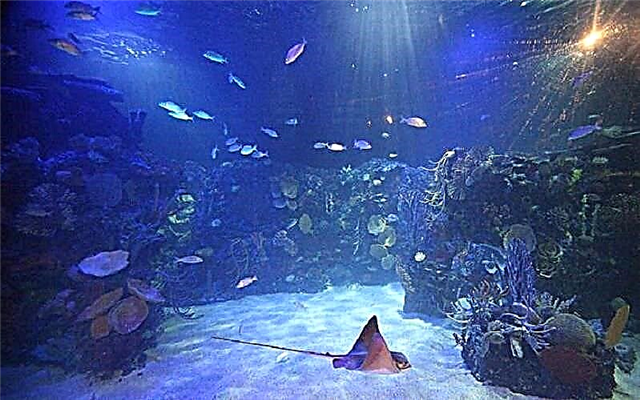
This impressive sunken ship inhabited by sharks is another of the favorite exhibits of children and young people who visit the Inbursa Aquarium.
The main protagonists of the boat are the cardboard fin shark and the blacktip shark. The cardboard fin shark is distinguished by having a much higher main dorsal fin than the second.
The blacktip reef shark is clearly recognizable by the dark outlines of the tips of its fins, particularly the first dorsal fin and the tail fin.
And since we are talking about ships, during some nights the Inbursa Aquarium conducts an entertaining 90-minute tour, during which the participants, while learning about the different levels of the aquarium, look for the ship that belonged to the famous pirate Red Barba, a pleasant way to introduce the public to the mysteries of the Sunken Ship.
How is Playa Calipso?
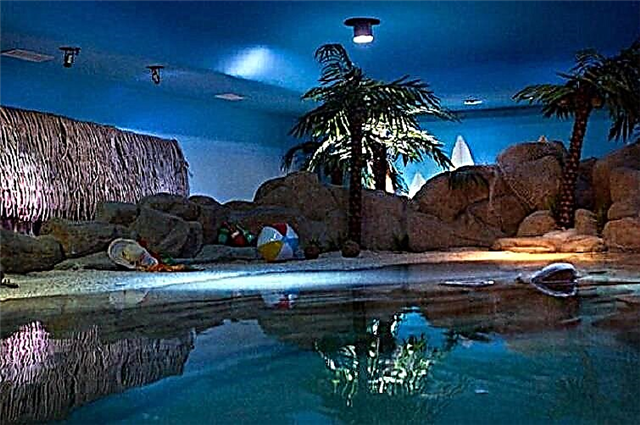
This beach is named after the mythological queen of the island of Ogygia, daughter of the titan Atlas, who according to Homer in The odyssey, retained Odysseus for 7 years with his charms.
Calypso was also the name adopted by the famous French oceanographer and explorer Jacques Cousteau for his famous research ship.
Beaches are one of the favorite vacation spots for human beings, so we must learn about their preservation.
Mexico has more than 9,300 km of coastline in which there are hundreds of beautiful beaches on the Atlantic, the Caribbean Sea and the Pacific.
The Calipso Beach of the Inbursa Aquarium is an excellent recreation of this type of environment, with species such as the puffer fish, the boat fish, the guitar shark and many others, without forgetting the beautiful mermaid, one of the most photographed characters in this exhibition Aquarium.
What can I see in the Jellyfish Labyrinth?
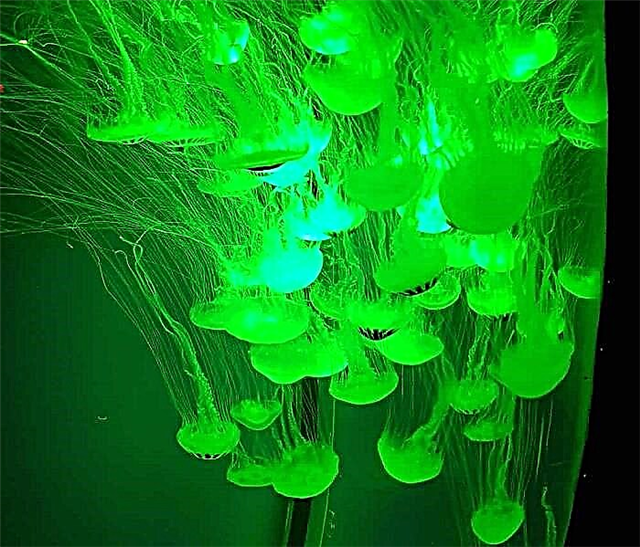
Jellyfish are very fragile organisms, since 95% of their body mass is water. If before visiting the Inbursa Aquarium you think that you have not come across a jellyfish, you have been lucky enough not to be touched on the beach by an aguamala.
Jellyfish are short-lived, as their life span rarely exceeds 6 months. One of the stars of the Inbursa Aquarium's Jellyfish Labyrinth is the Atlantic Nettle Jellyfish, a species whose sting causes intense pain and inflammation on human skin.
The Inverted Jellyfish is a species that lives in mangroves and shallow coastal lagoons of the Gulf of Mexico and the Caribbean Sea. It has 8 branched tentacles made up of bladders filled with tiny algae that give it its brownish color and with which it lives in symbiosis.
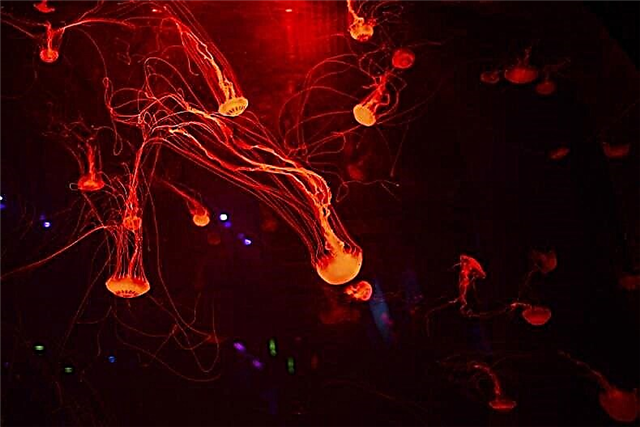
The Moon Jellyfish is one of the favorite dishes of sea turtles, in competition with Chinese, Japanese and other Asian humans, who also consume them.
The Cannonball Jellyfish lives along the Atlantic and in some regions of the Pacific. Its bell reaches 25 cm in diameter and is used for human consumption.
The Jellyfish Labyrinth of the Inbursa Aquarium allows an immersion in an exciting world of marine animals of which there are more than 2,000 species on the planet, these living beings being one of the oldest on Earth, with records of more than 700 years.
What are the prices and hours of the Inbursa Aquarium?
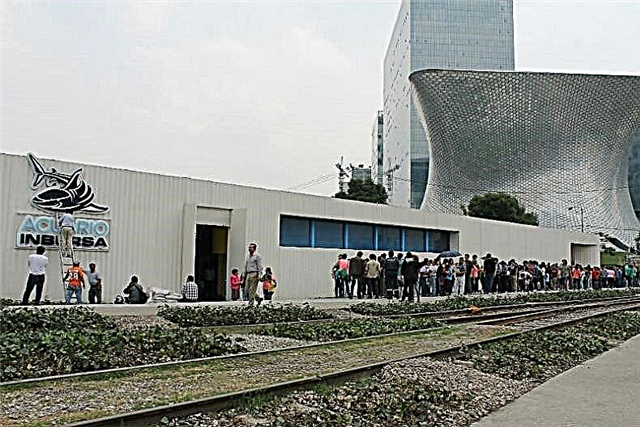
General admission has a cost of 195 pesos and the aquarium operates from Monday to Sunday between 10 AM and 6 PM.
Seniors (INAPAM) and people with disabilities have a preferential rate of $ 175. Children under 3 years old do not pay admission.
Tickets can be purchased online by filling out a short questionnaire on the website of the Aquarium or at the lockers.
Is the aquarium available for private events?
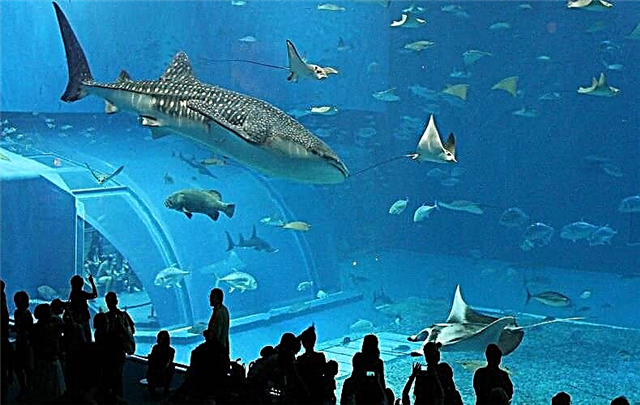
So is. The aquarium offers private guided tours for a minimum of 50 people, with one guide for every 40 participants. All screens can be used on these tours and customers receive a discount for parking use.
On the last Wednesday of each month, like all museums in Mexico, the aquarium is open between 6 AM and 10 PM with special activities called Night of Museums.
Likewise, you can rent the entire aquarium for dinners, cocktails, product presentations, press conferences and other institutional and advertising events.
The Inbursa Aquarium is also available for catwalk events, as a filming location, and even for romantic and green marriage proposals.
Can I take pictures?
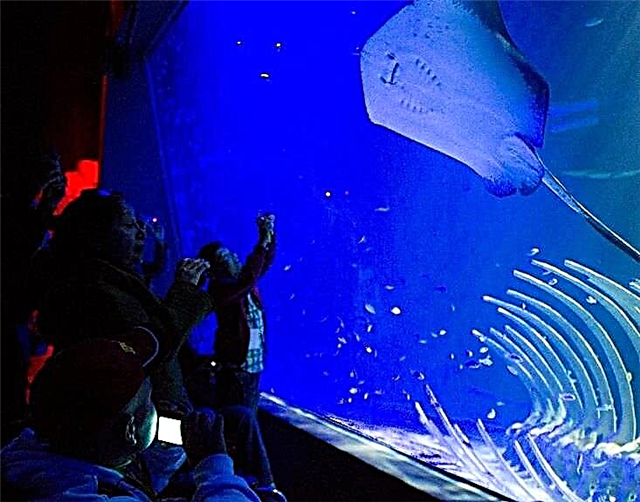
You can take all the photos you want. Among the most photographed spots in the aquarium are the Sunken Ship, the Playa Calipso mermaid, the penguins, the maze jellyfish and the sharks.
The only thing that the public is asked is not to use flashes and other means of illumination so as not to hurt the eyes or affect the visibility of the species conserved in the aquarium.
Can I tour the aquarium in a wheelchair or stroller?
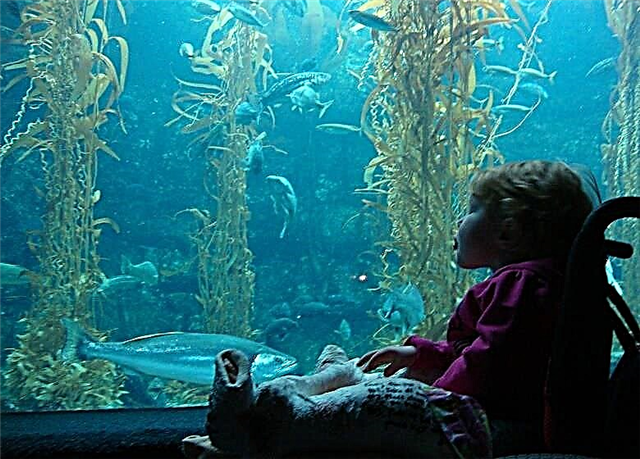
Of course yes. Disabled people are treated in a special way in the aquarium and the trained staff of the institution provides guidance in every way. The aquarium has some chairs to provide them to visitors who require them, but they are subject to availability.
Strollers are also allowed, but it is recommended not to enter units that are too large, as they affect the circulation of both the user and other visitors.
How do I get there and park?
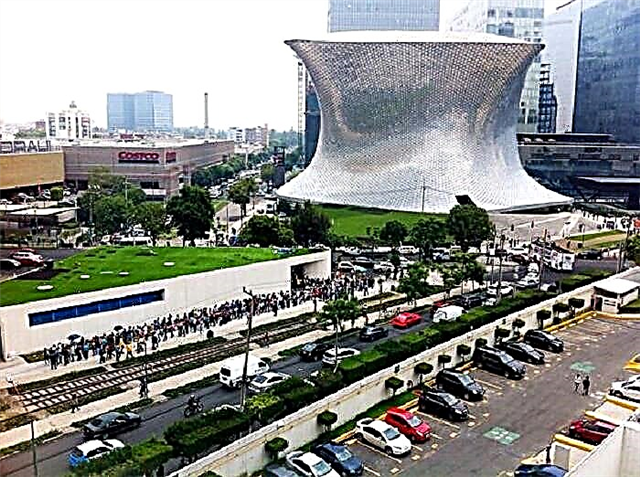
The Inbursa Aquarium is located on Avenida Miguel de Cervantes Saavedra 386, in Colonia Ampliación Granada, Mexico City.
To get there you can follow these simple directions:
- Line 7 - Polanco / Line 1 Chapultepec: Take the Route 33 truck towards Horacio and corner with Ferrocarril de Cuernavaca. Walk two blocks to the right towards Plaza Carso and you will find the aquarium.
- Line 7 - Saint Joaquin / Line 2 - Cuatro Caminos: Board the bus or van that goes in the direction of Plaza Carso. On Cervantes Saavedra Avenue you will see the aquarium on the right side and the Soumaya Museum on the left.
- Line 2 - Normal: Board the van that goes to the National Army and get off at the Cuernavaca Railroad crossing with the National Army; you will see the aquarium on the right.
Customers with a ticket to the Inbursa Aquarium can park in two places with reduced rates. They can do it in Plaza Carso with a 50% discount on Saturdays and Sundays, while from Monday to Friday you can park in Pabellón Polanco with the same discount.
What do people who have visited the museum think?
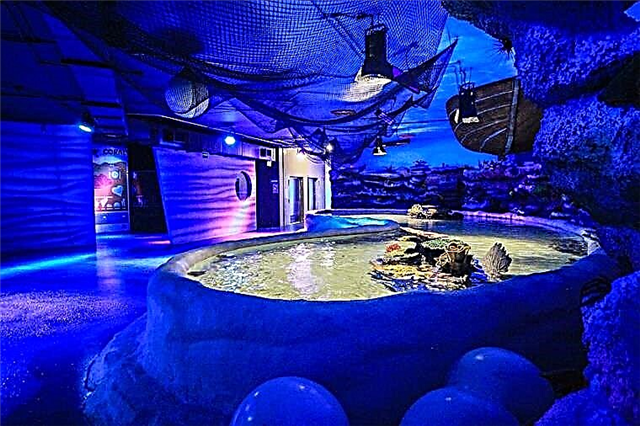
Below we transcribe some opinions of the museum's visitors, expressed through Tripadvisor:
“The aquarium is well cared for…. The attention is good "
“Good place to spend a pleasant time with the family…. The entry price is accessible "
“Despite the wait to enter the place, we had a beautiful welcome…. Seeing each species so close was too beautiful "
"Excellent aquarium, great variety of species, very attractive for children and very good distribution of areas"
“I recommend that you buy your tickets online the day before, so that you save 15 minutes of being in line and thus go direct. The aquarium is a magical place for all ages "
"It is a very good place to enjoy nature and in the company of the family, very safe"
“It is a wonderful experience, and it is a must if you go to Mexico City. You will be captivated by the beauty and magic of the place. Get to know him !! "
"A great walk for young and old where many species can be admired, including some in danger of extinction such as axolotls"
“I loved the whole aquarium. Everything is very well off and the route is mop "
Only your opinion is missing. We hope that very soon you can live the fantastic experience of visiting the Inbursa Aquarium!
You can also read:
- The 30 Best Museums In Mexico City To Visit
- 12 Magical Towns Near Mexico City That You Need To Know

